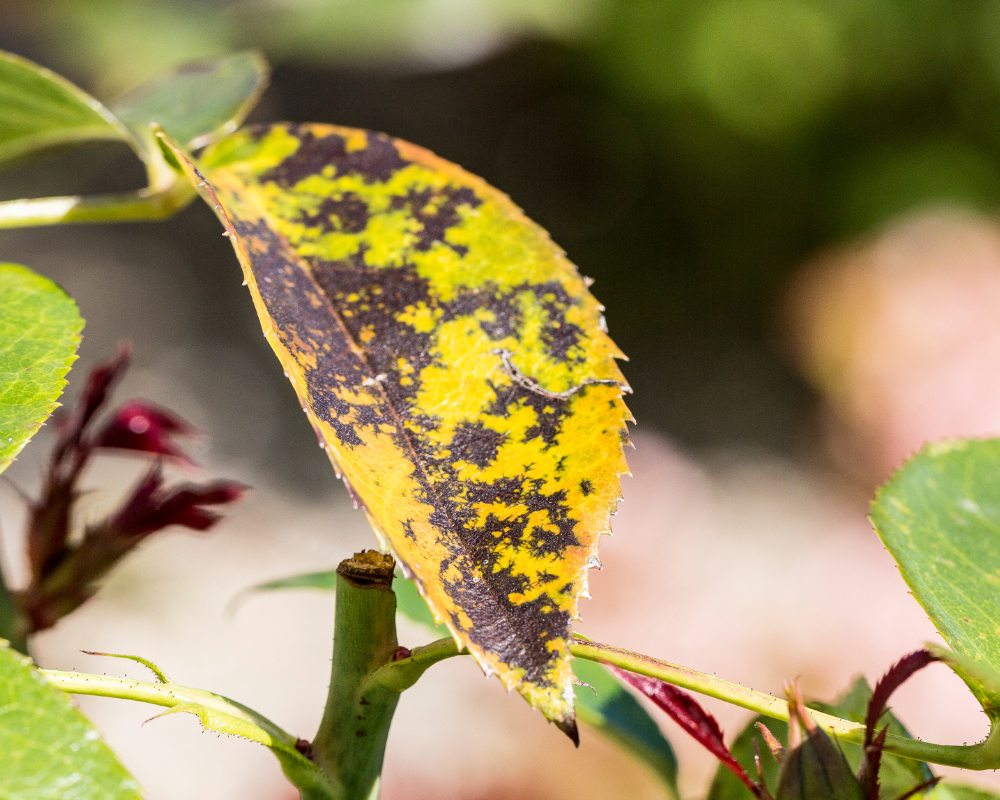
Tree service professionals of Georgia discuss leaf spot and leaf blotch.
What is Leaf Spot and Is It Harmful to Trees?
Trees are critical to the urban environment: they act as natural air cleaners and their shade helps reduce temperatures in the hottest times of the year. Deciduous trees (those that lose their leaves in the fall) are often planted as much for their fall colors as they are for their other positive properties. If these broad-leaved trees develop brown or purple or black spots and blotches and begin to fall early in summer, this can certainly be worrisome to the average homeowner. This article will discuss what the problem may be with your tree if you notice dead or ding spots on its leaves.
Spots on Leaves: What Does it Mean?
Leaves can become spotty for several reasons. It may be a tree disease or may be an environmental problem. Each cause raises its own individual concern about a tree’s health, and it may be best to have a tree service company investigate the problem.
The most common reasons for spots on leaves are:
- Fungus: Various fungi are the most common cause of the groups of diseases referred to as leaf spot. The color of the spots can vary depending on the part of the life cycle the fungus is in and the type of fungus it is.
- Bacteria: A bacterial infection can show itself in the leaves. It may be affecting primarily the leaves, or the leaves may be affected as a result of a deeper problem.
- Pests: Insects, particularly sucking insects, often eat holes in leaves that then become white or brown spots or rings.
- Over Fertilizing: This can cause leaves to appear burned and browned around the edges.
- Overwatering: This makes leaves turn yellow and droop.
- Bad Weather: Storms that have hail, wind, or lightning can cause damage to leaves leaving them with holes or bruises.
Common Causes of Leaf Spot and Leaf Blotch
Fungal infections are the most common cause of leaf spot and leaf blotch. These are often not harmful to a healthy, established tree and are merely a cosmetic issue. However, if they spread too far the infection can kill enough leaves that the tree may not be able to produce enough energy and it may go into decline.
The most common fungal leaf spot diseases are:
- Anthracnose
- Cedar-Apple Rust
- Cercospora Leaf Spot
- Guignardia Leaf Blotch
- Maple Tar Spot
Each of these present with different colored spots, some orange, some black, some purple, but most have a lighter colored ring around the edge of the spots, at least early in development.
Are There Treatments for Leaf Spot?
Unfortunately, once a leaf has evidence of leaf spot, it is already dying and cannot be saved. That said, the tree can still be treated and kept healthy. Here are a few of the strategies for treating and preventing future occurrences of leaf spot:
- Prune the affected branches with sterilized equipment.
- Thoroughly clean up the branches to prevent spread.
- If more of the tree is infected than can be safely pruned, make sure the tree is being properly fertilized and watered.
- Keep the leaves dry when watering by using a soaker hose.
- Consider using an antifungal spray if the problem is widespread.
What a Certified Arborist Can Do
When it comes to tree health care, a quality, certified arborist can do a lot. They can identify the type of leaf spot that your tree has and can do a tree risk assessment to figure out the next steps. Whether it needs tree trimming, tree pruning, or tree removal, the arborist and their team can take care of it quickly and efficiently.
About Boutte Tree, Inc.
2023 marks our 20th year serving the Greater Atlanta, GA Area. Boutte Tree, Inc. is all about keeping our urban forest healthy. Call today for a quote!
